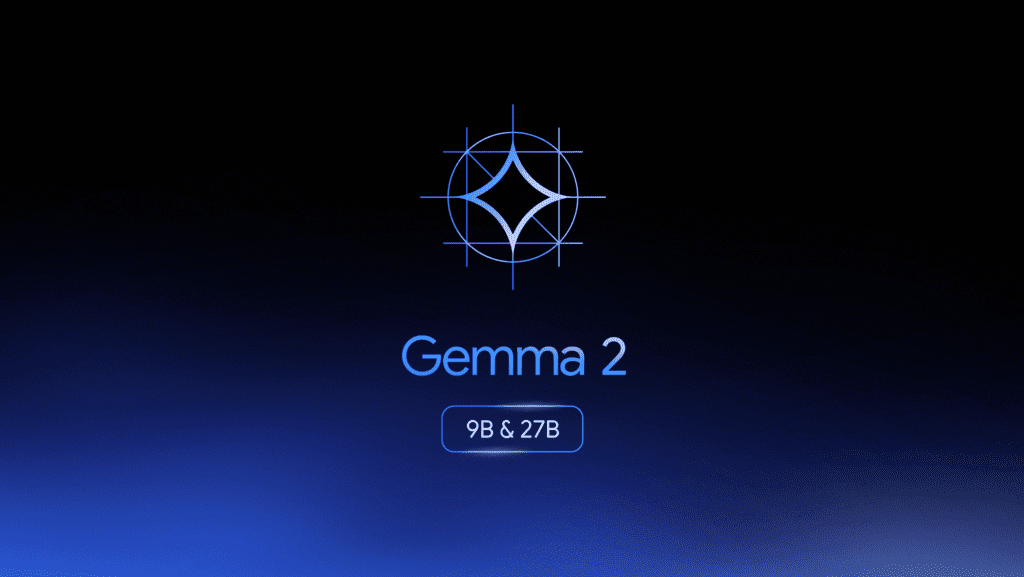
Google has unveiled Gemma 2, the latest iteration of its open-source lightweight language models. This groundbreaking release promises to democratize AI development by offering researchers and developers exceptional performance, efficiency, and accessibility.
A Deep Dive into Gemma 2’s Architecture
Gemma 2 builds upon the success of its predecessor, leveraging a decoder-only transformer architecture. The 27-billion parameter variant boasts training on a staggering 13 trillion tokens, primarily English text. This ensures a robust understanding of language nuances. But unlike its multimodal and multilingual sibling, Gemini, Gemma 2 focuses solely on language processing, streamlining its capabilities for text-based tasks.
Efficiency Meets Performance: A Winning Combination
Gemma 2 surpasses its predecessor in performance and efficiency. Not only does it compete effectively with models twice its size, but it’s also designed to operate seamlessly across diverse hardware. From laptops and desktops to mobile devices and IoT gadgets, Gemma 2 empowers developers to leverage its capabilities regardless of resource constraints.
Particularly noteworthy is Gemma 2’s optimization for single GPUs and TPUs. This translates to significant efficiency gains compared to its predecessor, especially on resource-limited devices. The 27-billion parameter model, for instance, excels at inference on a single NVIDIA H100 Tensor Core GPU or TPU host, making it a cost-effective option for developers seeking high performance without hefty hardware investments.
Empowering Developers with Extensive Fine-Tuning Options
Gemma 2 goes beyond raw performance by offering developers a vast array of fine-tuning capabilities. Whether using cloud-based solutions like Google Cloud or popular community tools like Axolotl, seamless integration ensures developers can optimize Gemma 2 for their specific needs. Additionally, support for platforms like Hugging Face and NVIDIA TensorRT-LLM, along with Google’s JAX and Keras, empowers researchers and developers to achieve optimal performance and efficient deployment across diverse hardware configurations.
Gemma 2 vs. Llama 3 70B: A Comparative Analysis
In the realm of open-source language models, both Gemma 2 and Llama 3 70B stand out. While Google researchers assert that the 27-billion parameter Gemma 2 delivers performance comparable to the much larger Llama 3 70B, the true differentiator lies elsewhere. Benchmark results consistently demonstrate that Gemma 2 9B outperforms Llama 3 8B in tasks encompassing language understanding, coding, and even solving math problems.
One key advantage that sets Gemma 2 apart is its exceptional handling of Indic languages. This is primarily due to its specially designed tokenizer, boasting a vast vocabulary of 256k tokens meticulously crafted to capture the nuances of these languages. In contrast, Llama 3, despite supporting numerous languages, struggles with tokenization for Indic scripts due to limited vocabulary and training data. This makes Gemma 2 the clear choice for developers and researchers working in these regions.
Unlocking Practical Applications with Gemma 2
Gemma 2’s strengths translate into a wide range of practical use cases:
- Multilingual Assistants: The specialized tokenizer makes Gemma 2 ideal for building multilingual assistants. From educational materials in Urdu to marketing content in Arabic or research articles in Bengali, Gemma 2 empowers creators with effective language generation tools. A prime example is Navarasa, a multilingual assistant built on Gemma, supporting nine Indian languages.
- Educational Tools: Gemma 2’s ability to solve math problems and understand complex language queries makes it perfect for crafting intelligent tutoring systems and educational apps that personalize the learning experience.
- Coding Assistance: Gemma 2’s proficiency in computer coding benchmarks highlights its potential as a powerful tool for code generation, bug detection, and automated code reviews. Its ability to thrive on resource-constrained devices allows for seamless integration into development environments.
- Retrieval-Augmented Generation (RAG): Gemma 2’s strong performance on text-based inference tasks makes it suitable for developing RAG systems across various domains. Applications include healthcare information synthesis, legal AI for providing legal advice, intelligent chatbots for customer support, and personalized education tools.
Acknowledging Limitations and Embracing Continuous Improvement
Despite its advancements, Gemma 2 faces challenges primarily related to the quality and diversity of its training data. While the tokenizer supports various languages, specific training for multilingual capabilities is necessary for optimal performance. The model excels with clear prompts, but struggles with open-ended tasks, nuanced language like sarcasm, and factual accuracy. Additionally, common-sense reasoning might be lacking in specific contexts. Google is actively addressing these limitations, particularly in sensitive areas like medicine. However, the potential for misuse in less refined domains remains a concern. Finally, Gemma 2 is currently limited to text-based data processing.
The Future of Accessible AI is Here
Gemma 2 represents a significant leap forward in open-source language models. Its focus on accessibility, efficiency, and performance empowers a broader range of developers and researchers to unlock the potential of AI. As Google continues to refine Gemma 2 and address its limitations, we can expect even more transformative applications to emerge across diverse industries.
Here are some exciting possibilities on the horizon:
- Democratization of AI Research: The open-source nature of Gemma 2 fosters collaboration and innovation. Researchers and developers with limited resources can now experiment with advanced language models, accelerating progress in AI research.
- Rise of Citizen Developers: The user-friendly nature of Gemma 2 empowers individuals with limited coding experience to build AI-powered applications. This fosters the creation of innovative solutions that address local and niche needs.
- Integration with Edge Computing: Gemma 2’s efficiency on resource-constrained devices paves the way for seamless integration with edge computing. This can power real-time AI applications in areas with limited internet connectivity, opening doors to advancements in fields like agriculture, environmental monitoring, and disaster management.
- Bridging the Language Gap: Gemma 2’s exceptional handling of Indic languages has the potential to revolutionize communication and information access in these regions. Imagine educational resources, healthcare information, and government services readily available in local languages – this is the transformative power of Gemma 2.
A Call to Action
The potential of Gemma 2 is undeniable. As developers and researchers explore its capabilities, it’s crucial to prioritize responsible development and ethical considerations. We must work together to ensure Gemma 2 is used for positive social impact, fostering a future where AI empowers rather than excludes.
Join the Conversation
Are you excited about the possibilities unlocked by Gemma 2? Share your thoughts and ideas in the comments below. Let’s discuss how we can leverage this technology to create a more inclusive and intelligent future for all.

